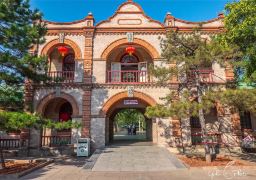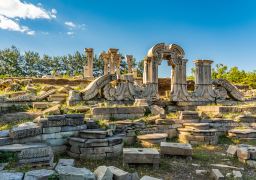The Confucius Temple and Guozijian Museum are composed of the ancient architectural complexes of the Confucius Temple and Guozijian, which are closely adjacent and share similar themes, now open to the public as a single scenic area. The ticket office is located next to the entrance of the Confucius Temple; after purchasing a ticket, visitors can enter the temple and proceed to Guozijian through the ‘Chijing Gate’ beside the stele pavilion.
The Confucius Temple, originally constructed during the Yuan Dynasty, served as the site for the veneration of Confucius during the Ming and Qing Dynasties. The temple is of significant scale, and it typically takes about 1-2 hours to tour and visit. There are three main focal points to note when visiting the temple. First, the temple houses rare Yuan Dynasty-style architecture unique to Beijing. Second, the courtyard contains numerous steles, including inscriptions by notable figures such as Yuan Chonghuan, Lin Zexu, and Li Hongzhang, as well as the roster of over 50,000 graduates from the Yuan to the late Qing Dynasty, and the stele forest inscribed with the Thirteen Classics of Confucianism, all of which are rich in content and extremely valuable. Third, the traditional ceremonial music and dance performance ‘Da Cheng Li Yue’ is conducted several times a day within the Chong Shengci courtyard, showcasing ancient traditional culture and art, which is very impressive. Additionally, the courtyard has an antique charm with towering ancient trees and exhibits related to the worship of Confucius, which can be visited one by one. Guozijian, the national academy during the Ming and Qing Dynasties, is also the place where emperors gave lectures in person in the past. Like the Confucius Temple, the architecture here is also antique and charming, with towering ancient trees in the courtyard, making it a beautiful and suitable place for visiting and photography, typically taking about 1 hour to tour. When visiting Guozijian, pay attention to the architecture within the courtyard. Buildings such as the Ji Xian Gate, Tai Xue Gate, and the colorful glazed archway are very distinctive, with the glazed archway being a landmark of Guozijian. The Biyong Hall is the main structure within Guozijian, surrounded by a circular moat on the outside and a square-shaped hall in the center, which is quite special. Adjacent to it, the Yilun Hall is where ancient emperors gave lectures and is also worth a visit. There are also year-round exhibitions such as the ‘Chinese Imperial Examination System Exhibition’ and the ‘Guozijian Original Status Exhibition’ for visitors interested in the imperial examination system. The opening hours are as follows: January 1st to July 18th, closed on Mondays; Tuesday to Sunday, 09:00-17:00; July 19th to August 31st, Friday to Saturday, 09:00-19:00; Monday, Wednesday to Thursday, Sunday, 09:00-17:00; September 1st to December 31st, Tuesday to Sunday, 09:00-17:00; closed on Mondays; July 19th to August 31st, closed on Tuesdays; National holidays such as New Year’s Day, Spring Festival, Qingming Festival, Labor Day, Dragon Boat Festival, Mid-Autumn Festival, and National Day, 09:00-17:00. Preferential policies for the elderly: Seniors aged 60 and above (including 60) from all over the country can visit for free with valid ID; free for retired cadres with a retirement certificate; free for students: middle and primary school students nationwide, minors under 18 years old (excluding 18 years old) can visit for free with valid ID.Free admission. Full-time undergraduate and junior college students across the country can enjoy half-price tickets with their valid student ID cards. Active-duty soldiers: Active-duty soldiers are exempted from tickets with valid certificates. Free for disabled people: Disabled people are exempted from tickets with disability certificates.









